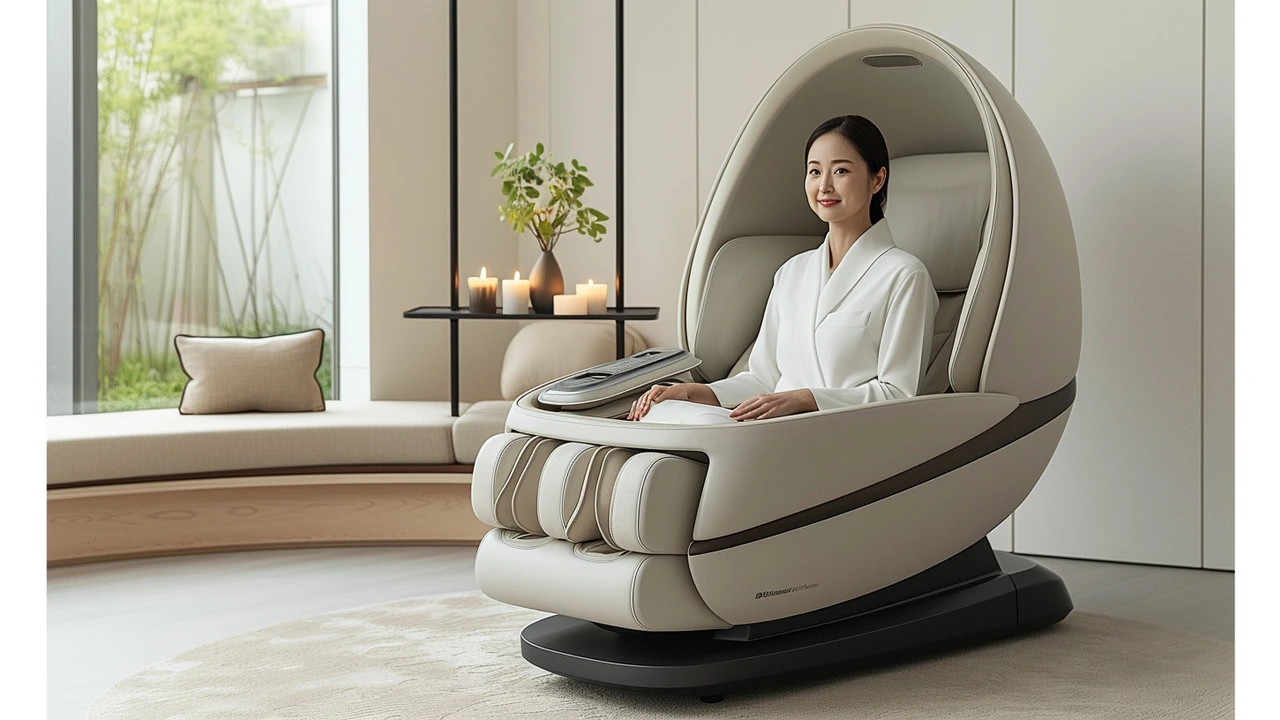Deep Tissue Massage for Enhanced Flexibility: Mastering Your Body's Potential
 Feb, 15 2024
Feb, 15 2024
The Science Behind Deep Tissue Massage and Flexibility
When you think of deep tissue massage, the first thing that might come to mind is the feeling of relief that washes over you as tight, knotted muscles finally start to relax. But have you ever considered why this form of massage is so effective, particularly in enhancing flexibility? It's not just about relaxation; there's a fascinating science at work.
Deep tissue massage targets the deeper layers of muscle and connective tissues, employing slow and firm strokes to break up scar tissue and reduce tension in the muscle and fascia. This process not only helps alleviate pain but also improves range of motion and flexibility. By applying pressure to specific points, deep tissue massage stimulates blood flow to the muscles, which enhances oxygen and nutrient delivery and aids in the removal of waste products like lactic acid. This improved circulation can help to repair damaged muscles more quickly and restore their elasticity, leading to enhanced flexibility.
Moreover, deep tissue massage influences the body's production of hormones and neurotransmitters. It can increase levels of serotonin and dopamine, which contribute to feelings of relaxation and well-being, while decreasing cortisol, a stress hormone that can make muscles tense and rigid. This hormonal shift is not only beneficial for your mental health but also allows your muscles to relax and stretch more easily, further promoting flexibility.
Benefits Beyond Flexibility
While enhancing flexibility is a significant benefit of deep tissue massage, its advantages extend far beyond that. People of all walks of life, from athletes to office workers, can experience the multifaceted benefits of this massage technique. Its ability to reduce muscle tension and pain can lead to improvements in posture and movement efficiency, as well as a lowered risk of injury. Additionally, the stress-relieving aspects of deep tissue massage can have profound effects on your overall well-being, helping to combat anxiety, depression, and sleep issues.
From a physiological standpoint, deep tissue massage promotes the healing of injured muscles by breaking down adhesions (bands of painful, rigid tissue) and increasing blood flow to the affected areas. This not only accelerates recovery time but also prevents injuries from becoming more severe. For those suffering from chronic pain conditions, such as fibromyalgia or lower back pain, deep tissue massage can provide significant relief by addressing the underlying causes of pain, rather than just treating the symptoms.
Techniques to Maximize Flexibility
Incorporating deep tissue massage into your routine requires understanding how to maximize its benefits, especially when it comes to improving flexibility. It's important to communicate with your massage therapist about your flexibility goals so they can tailor the session to your needs. Highlighting areas of particular tightness or previous injury can help them focus their efforts where it will be most beneficial. Additionally, incorporating stretching and mobility exercises into your post-massage routine can enhance the effects of the massage, allowing you to build on the increased flexibility achieved during the session.
Consistency is key when it comes to deep tissue massage. Regular sessions can lead to cumulative benefits, including gradual improvements in flexibility and range of motion. However, overdoing it can be counterproductive. Allowing adequate time for muscles to recover between massages is crucial to avoiding overstimulation and ensuring your body can fully benefit from each session. Striking the right balance between massage, exercise, and rest is essential for optimizing your body's flexibility and overall health.
DIY Deep Tissue Massage Techniques
While professional massages are incredibly beneficial, there are also DIY techniques you can use to supplement your flexibility journey. Tools like foam rollers, massage balls, and even certain household items can be used to perform self-myofascial release, which mimics the effects of deep tissue massage. Focusing on areas of tightness and spending time working through knots with these tools can lead to increased flexibility and muscular relief. It's a cost-effective and convenient way to maintain the benefits of deep tissue massage between professional sessions.
However, caution is advised when attempting deep tissue massage on yourself. Using too much pressure or targeting the wrong areas can lead to injury or further muscle tightness. Educating yourself on proper techniques and starting gently can help mitigate these risks. In cases of severe tension or chronic pain, consulting with a professional massage therapist before attempting DIY techniques is highly recommended.
Choosing the Right Massage Therapist
Finding a massage therapist who is skilled in deep tissue techniques and understands your specific needs is crucial. Look for someone with the proper certifications and training, ideally with experience working with individuals with similar goals and conditions as yours. Reading reviews and asking for recommendations can help you find a therapist who matches your preferences. Communication is also key; a good therapist will listen to your concerns, explain their approach, and adjust their techniques based on your feedback.
Building a therapeutic relationship with your massage therapist can lead to better results and a more personalized experience. Don't hesitate to switch therapists if you're not achieving the desired outcomes or if you feel uncomfortable for any reason. Your comfort and safety should always be the top priority.
Making Massage a Part of Your Wellness Routine
Integrating deep tissue massage into your regular wellness routine can transform your body's flexibility, strength, and overall health. Alongside exercise, proper nutrition, and adequate rest, massage can help maintain your muscular system in peak condition, allowing you to enjoy a more active and pain-free lifestyle. Paying attention to how your body responds to massage and adjusting your routine accordingly can ensure you get the most out of this powerful tool.
Remember, the journey to enhanced flexibility and wellness is a personal one. What works for someone else may not work for you. Being patient and consistent with your efforts, while staying attuned to your body's needs, will help you achieve the best results. Embracing deep tissue massage as part of this journey can open up new possibilities for your physical and mental health, leading to a happier, more flexible you.





